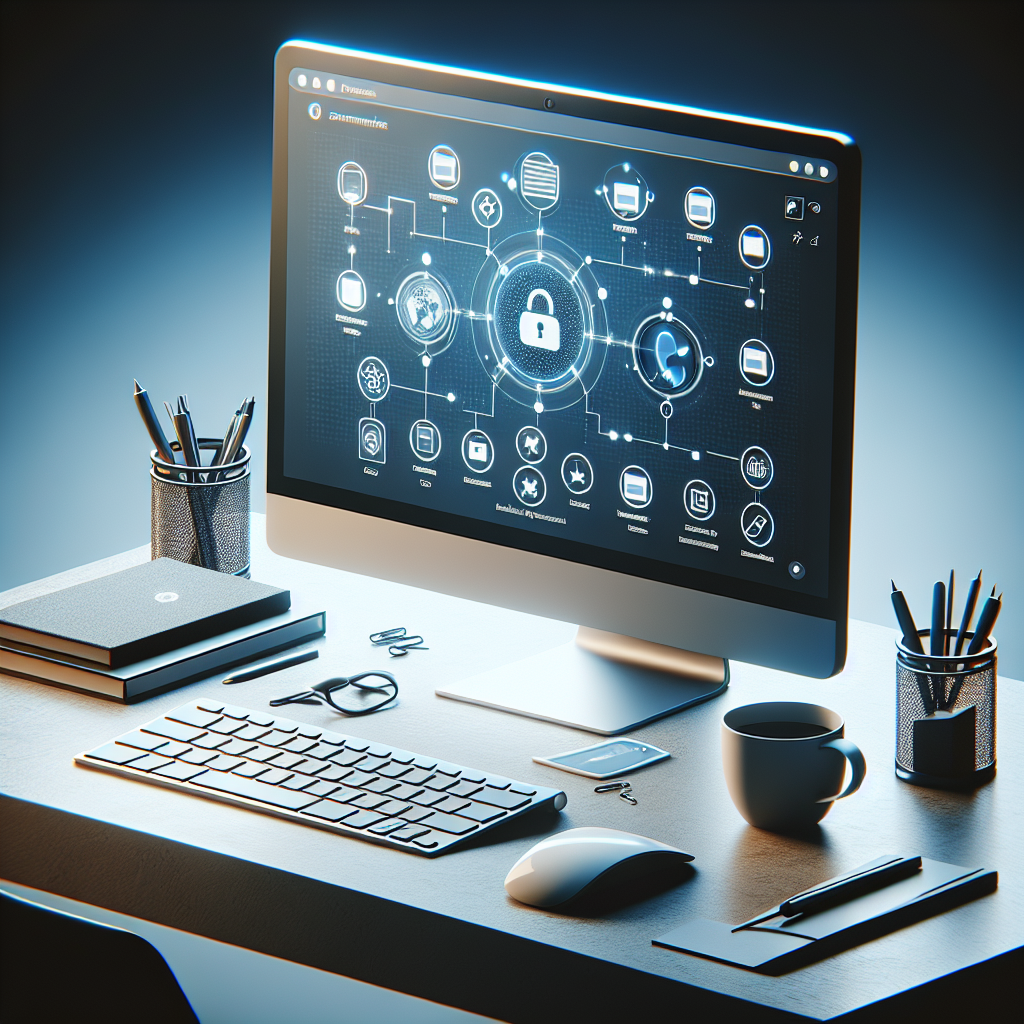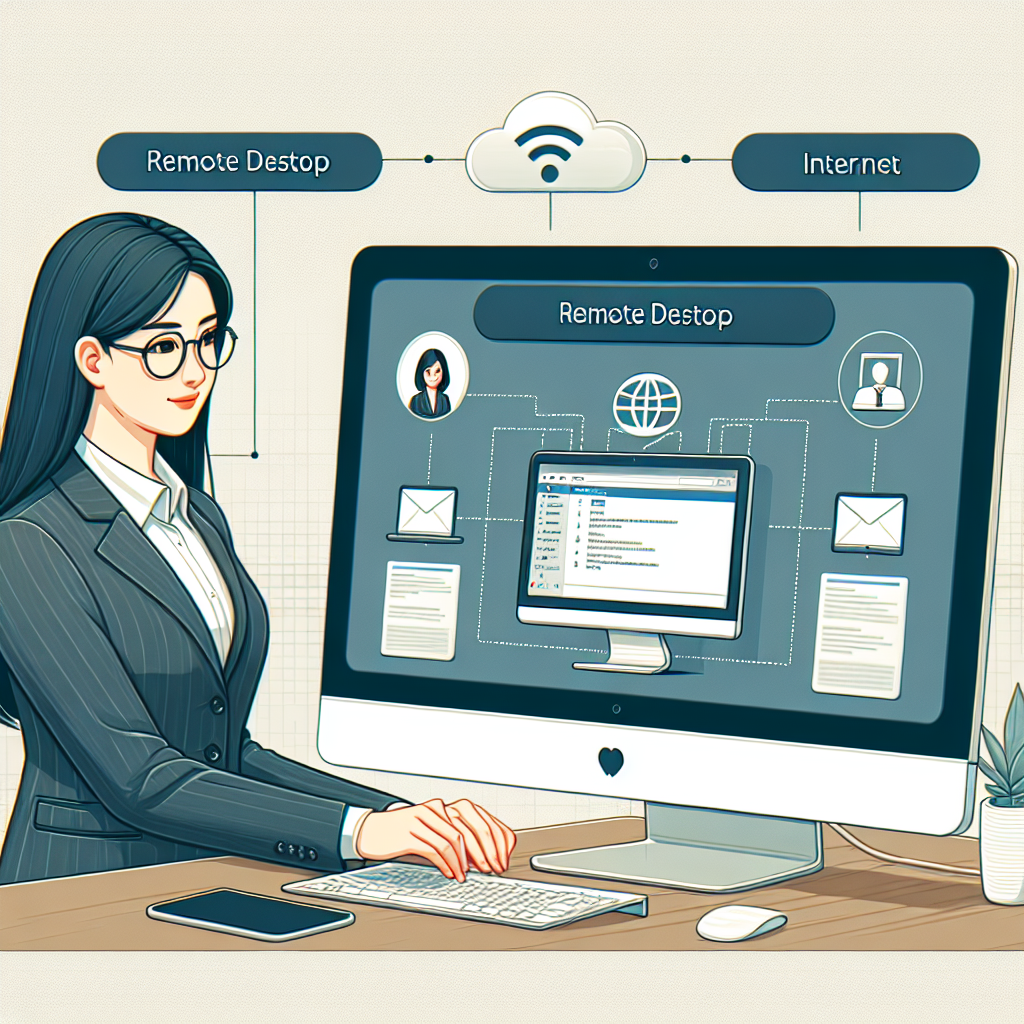In the fast-paced world of modern technology, the ability to access your computer from anywhere in the world has become an essential tool for productivity and convenience. Setting up remote desktop access allows you to connect to your desktop computer from a remote location, giving you the freedom to work, access files, and troubleshoot issues without being physically present. This guide will walk you through the simple steps of how to set up remote desktop access, enabling you to stay connected and in control of your computer no matter where you are. Join us on this journey to unleash the power of remote desktop access and revolutionize the way you work.
Understanding Remote Desktop Access
- What is remote desktop access?
- Remote desktop access refers to the ability to connect to and control a computer or device from a different location using a network connection.
- It allows users to access files, applications, and resources on a remote computer as if they were physically present in front of it.
-
This technology enables remote troubleshooting, collaboration, and access to work resources from anywhere in the world.
-
Importance of remote desktop access in today’s digital landscape
- In the increasingly digital and interconnected world, remote desktop access plays a crucial role in facilitating flexible work arrangements and remote operations.
- It allows employees to work from home, travel while staying productive, and access critical information securely.
- Remote desktop access enhances efficiency, collaboration, and accessibility, making it an essential tool for businesses and individuals in the modern era.
Preparing Your Systems for Remote Access

– Check system requirements
To begin setting up remote desktop access, it is essential to first verify that the systems you intend to connect remotely meet the necessary requirements. Ensure that the operating systems of both the host and client computers support remote desktop functionality. Additionally, confirm that the hardware specifications, such as processor speed, memory, and disk space, meet the minimum requirements for a seamless remote connection experience.
- Ensure network connectivity and stability
Network connectivity is a critical factor in establishing successful remote desktop access. Before proceeding, check that both the host and client devices are connected to a stable and reliable network. Verify that the internet connection speed is sufficient to support remote desktop connections without lag or interruptions. If using a Wi-Fi connection, ensure a strong signal strength to avoid disconnections during remote sessions.
- Install necessary software and updates
Installing the appropriate software and updates is crucial in preparing your systems for remote access. Begin by enabling remote desktop settings on the host computer’s operating system. For Windows users, navigate to the Control Panel, select System and Security, and then click on System. From there, enable Remote Desktop to allow incoming remote connections. On a Mac computer, access the System Preferences, click on Sharing, and enable Remote Management. Additionally, ensure that both systems have the latest security patches and updates installed to mitigate any vulnerabilities that could compromise remote access security.
Configuring Remote Desktop Settings
- Accessing remote desktop settings on Windows and Mac OS
Remote desktop settings can be accessed differently on Windows and Mac OS platforms. On a Windows computer, you can navigate to the System Properties by right-clicking on the “This PC” icon, selecting “Properties,” and then clicking on the “Remote settings” option. For Mac OS, the remote desktop settings are found within the System Preferences menu under the “Sharing” section. Here, you need to enable the “Remote Management” option to configure remote desktop access settings.
- Setting up user permissions and security protocols
Once you have accessed the remote desktop settings, it is crucial to set up user permissions and security protocols to ensure secure remote access. You can specify which users are allowed to connect remotely and define the level of access they have. It is recommended to create strong, unique passwords for remote desktop connections and consider implementing two-factor authentication for an added layer of security.
- Configuring firewall settings for remote access
Configuring firewall settings is essential to enable remote desktop access while maintaining network security. You need to open the necessary ports on the firewall to allow remote desktop connections. On Windows, you can adjust the firewall settings by accessing the Control Panel and navigating to the Windows Defender Firewall section. For Mac OS, firewall settings can be configured in the Security & Privacy preferences. Ensure that the firewall rules permit inbound remote desktop connections while still protecting your system from unauthorized access.

Establishing Remote Connection
-
Connecting to a remote desktop using IP address or hostname
Setting up remote desktop access involves connecting to a remote computer using either its IP address or hostname. To do this, you need to ensure that the remote computer is configured to allow remote connections. You can obtain the IP address of the remote computer by accessing its network settings or using a command prompt to run the ipconfig command. Alternatively, you can use the hostname of the remote computer if it has been assigned one on the network.
-
Troubleshooting common connection issues
When establishing a remote connection, you may encounter common issues such as network connectivity problems, firewall restrictions, or incorrect login credentials. To troubleshoot these issues, ensure that both the local and remote computers are connected to the internet and that the necessary ports for remote desktop access are open on the firewall. Additionally, double-check the username and password you are using to log in to the remote desktop to avoid authentication errors.
-
Implementing best practices for secure remote connections

To ensure the security of your remote desktop access, it is essential to implement best practices such as using strong passwords, enabling network-level authentication, and encrypting the remote connection. Strong passwords should be unique and complex to prevent unauthorized access to the remote desktop. Network-level authentication adds an extra layer of security by requiring users to authenticate themselves before establishing a remote connection. Encrypting the remote connection using protocols like SSL/TLS helps protect the data transmitted between the local and remote computers from eavesdropping and tampering.
Enhancing Remote Desktop Experience
- Optimizing display settings for better performance
Remote desktop access can be significantly improved by optimizing display settings. Adjusting the display resolution to match the remote device can enhance clarity and reduce lag. Additionally, disabling visual effects and animations can further streamline performance, especially when working with graphic-intensive applications.
- Utilizing remote desktop features for seamless workflow
To enhance the remote desktop experience, make use of features like file transfer capabilities, clipboard sharing, and printer redirection. These tools can facilitate a seamless workflow by allowing easy transfer of files between local and remote devices, enabling copy-paste functionality, and ensuring that local printers can be used from the remote desktop.
- Implementing multi-monitor support for enhanced productivity
For users requiring increased screen real estate, implementing multi-monitor support can be a game-changer. By configuring remote desktop settings to utilize multiple monitors, users can spread out their workspace and work more efficiently across different screens. This feature is especially beneficial for tasks that involve multitasking or require viewing multiple applications simultaneously.
Ensuring Security and Compliance
-
Implementing encryption protocols for data protection
- Utilize robust encryption techniques such as AES (Advanced Encryption Standard) to secure data transmission over the remote desktop connection.
- Enable network-level authentication to add an extra layer of security by requiring users to authenticate themselves before establishing a connection.
-
Consider using VPN (Virtual Private Network) technology to create a secure tunnel for remote desktop sessions, safeguarding data from unauthorized access.
-
Enforcing strong password policies and access controls
- Implement multi-factor authentication (MFA) to ensure that only authorized users can access the remote desktop system.
- Enforce complex password requirements, including a combination of uppercase and lowercase letters, numbers, and special characters.
-
Regularly update and rotate passwords to mitigate the risk of unauthorized access and enhance overall security posture.
-
Complying with industry regulations for remote access
- Adhere to regulatory standards such as HIPAA (Health Insurance Portability and Accountability Act) or GDPR (General Data Protection Regulation) when accessing sensitive data remotely.
- Maintain audit logs of remote desktop access activities to ensure compliance with industry regulations and facilitate monitoring and reporting.
- Conduct regular security assessments and audits to identify vulnerabilities and ensure that the remote desktop access setup meets all necessary compliance requirements.
FAQs for How to Set Up Remote Desktop Access
What is remote desktop access and why is it useful?
Remote desktop access allows users to access their computer or server from a different location using a different device. This can be useful for accessing files, programs, and data on your computer while you are away from it. It also allows for troubleshooting and working remotely with colleagues.
How do I set up remote desktop access on my computer?
To set up remote desktop access on your computer, you will need to enable the feature in your computer’s settings. On Windows, you can go to the Control Panel, then System and Security, then click on System. From there, click on Remote settings and enable remote desktop. On a Mac, you can enable remote desktop access in the Sharing settings. Make sure to set a strong password to protect your computer from unauthorized access.
What software do I need to access my computer remotely?
There are several software options available for accessing your computer remotely. Popular choices include TeamViewer, AnyDesk, Chrome Remote Desktop, and Windows Remote Desktop Connection. These software programs allow you to connect to your computer from a different device and control it as if you were sitting in front of it.
Can I access my computer remotely from any location?
Yes, as long as you have an internet connection, you can access your computer remotely from anywhere in the world. Keep in mind that the speed and reliability of your internet connection may affect the performance of your remote desktop session. It is recommended to use a secure and stable internet connection for the best experience.